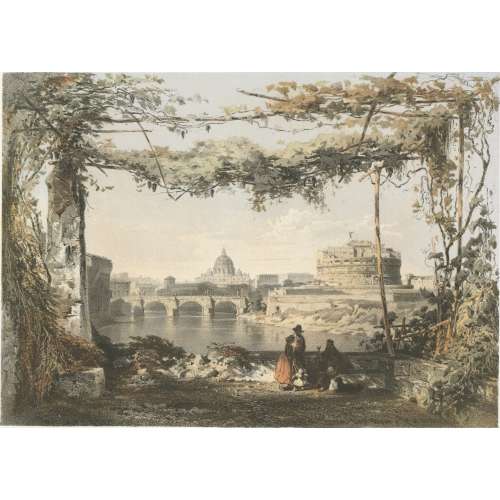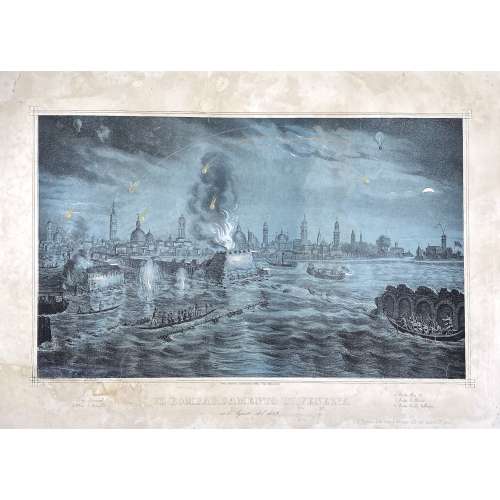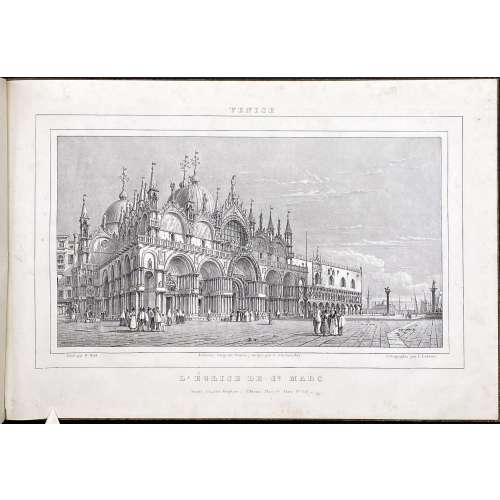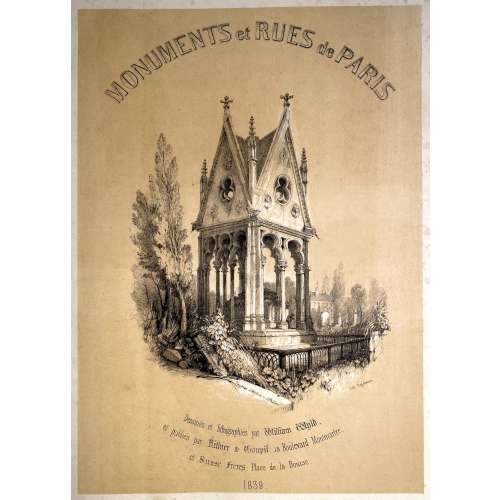Pictorial album 55.5 x 41.0 cm, publisher’s quarter sheepskin over cloth, upper cover and flat spine lettered in gilt.
Title: MONUMENTS et RUES de PARIS | Dessinés et lithographiés par William Wyld, | et publiés par Rittner & Goupil, 15 Boulevard Montmartre, | et Susse Frères, Place de la Bourse. | 1839.
Collation: Title plate + 20 plates numbered from 1 to 20, printed by Godefroy Engelmann (French, 1788 – 1839) in tone lithography after drawings by William Wyld (British, 1806 – 1889).
Published in Paris by Rittner & Goupil and Susse Frères in 1839.
Plates: 54.8 x 39.8 cm.
Contents:
Title page: Tombeau d'Heloïse et d'Abélard
- Le Pont Neuf
- L'église de la Madeleine
- La Porte St. Martin
- Palais des Tuileries
- Pont des Saints-Pères
- Hôtel de Ville
- Marché des Innocents
- Palais Royal
- Boulevard des Italiens
- Rue de la Paix
- Bourse et Tribunal de Commerce
- Porte St. Denis
- Pont Royal
- Place de la Concorde
- Paris from Père Lachaise
- Notre-Dame
- Jardin des Tuileries with Arc de Triomphe in the Distance
- Panthéon
- Chambre des députés
- Arc de Triomphe de l'Étoile
Description of Shapero Rare Books, London: A very rare pictorial record of Paris before the French capital was drastically remodelled by Haussmann during Napoleon III’s Second Empire. William Wyld (1806-1889), an English painter and lithographer, set up his studio in Paris in 1834, becoming friends with the French painters Ary Scheffer and Paul Delaroche. His first subjects were fashionable orientalist scenes, however, he soon turned to classical architectural, winning a gold medal at the Paris Salon for his two-meter wide canvas ‘Venice at Sunrise’ in the same year in which he published
Monuments et rues de Paris. This series is a compilation of twenty fine views of Paris, showing both architectural features, street scenes and views over the river Seine, as well as a panorama of the city from the cemetery of Père Lachaise. Some of the views, such as the representations of the Palais des Tuileries, the Marché des Innocents or the Pont des Sts Pères, testify to the beauty of these structures that no longer exist.






